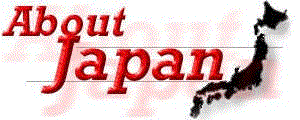
About Japan

Tokyo is the capital of Japan and its largest city in terms of area and population. There are nearly 12 million people residing in Tokyo To (metropolis), an area of about 837 square miles. Part of its beauty is that it is a study in contrasts. The old and new, the large and the small, the ancient and the modern exist side-by-side, in harmony.
Tokyo is located on the Kanto Plain on the east coast of central Honshu. It is bordered by Chiba Prefecture on the east, Saitama on the north, Yamanashi on the west, Kanagawa on the southwest and by Tokyo Bay on the southeast. It sits at about 34 degrees north latitude which is about the same latitude as New York City.
Tokyo consists of 23 wards, each governed as its own municipalty. Some of the more well-known are:
The four seasons are distinctly apparant. Summer gets quite hot with temperatures in the ninety’s while winter temperatures can occasionally reach freezing but average in the 40s. Spring is usually quite pleasant, however the rainy season usually lasts about three to four weeks in May and June. Autumn is usually quite nice with comfortable temperatures and dry weather. However, Tokyo is subject to an occasional typhoon.
Tokyo was virtually destroyed during the bombing raids of World War II. In a relatively short period of time, the city has has been rebuilt and emerged as one of the major economic, cultural and technological centers of the world. Tokyo is made up of many districts and has no real center. Each district has its own community feel to it and they are all built around a subway or train station. Many of these districts have been in existence for hundreds of years, while some have sprung up within the last 30 years. A dramatic growth spurt in the early 1960s occured as the city prepared for the 1964 Tokyo Olympics.
In a perfect example of old blending with the new, you will probably eventually stumble across The Imperial Palace which sits in the Chiyoda district amid the massive office buildings, museums, department stores and appartments that are modern Tokyo.
Way too much info on this subject for me to do it justice. And it changes often. Please click the links for each of the stations, ports or systems listed in this section for current info.
Public transportation in Tokyo is quite efficient. You can set your watch by knowing the arrival or departure time of a train. However they are usually quite crowded. The entire city and its surrounding areas are laced throughout with subway and rail lines. You can pick up a subway map in any station. And, of course, there are taxies running all over the place but they are pretty expensive. Cross-town travel is primarily by subway however the Airport Limousine company drives vans between the two major airports, the two major rail terminals and other strategic points. They run on a schedule similar to a standard bus route.
Air Transportation - Tokyo is served through Haneda and Narita International Airports. Haneda, located just south of the city, handles all domestic flights into and out of the city with some international flights, primarily to other Asian cities. Narita, which is about 65 miles west of the city, is the main international port.
Local trains and subway system - Tokyo itself is served by an extremely efficient subway system.
Rail Hubs - Tokyo has two large train stations. Ueno Station and Tokyo Station.
Travel by automobile can be a trying experience. The traffic is constant and rush hour lasts about 20 hours per day. Japanese roads are not laid out in a grid but usually follow old trails and footpaths. Learning your way around Tokyo, or most any city for that matter, can be a real adventure. When driving, be sure to allow plenty of time for traffic. I hesitate to offer a road map of the city. However, the World Travel Guide has some good info. Good luck driving.
For info about getting to Tokyo from Misawa, see our getting around pages.